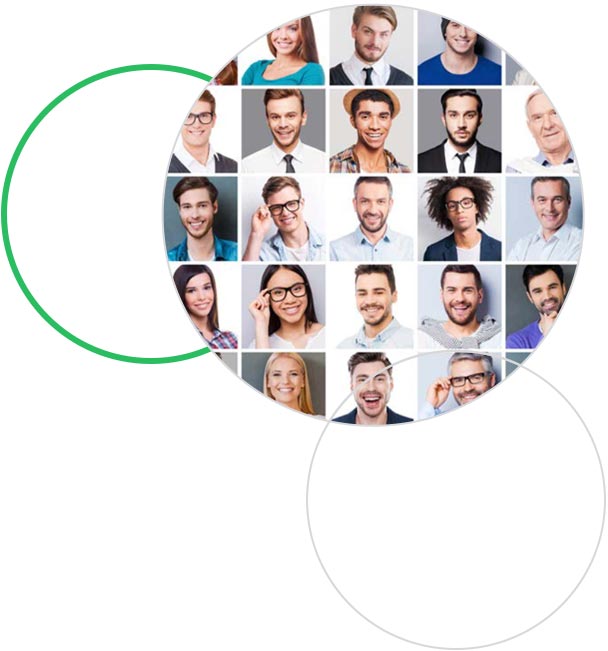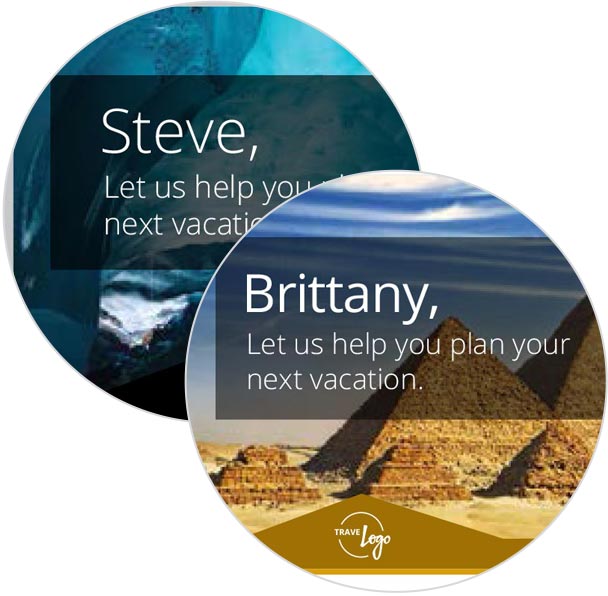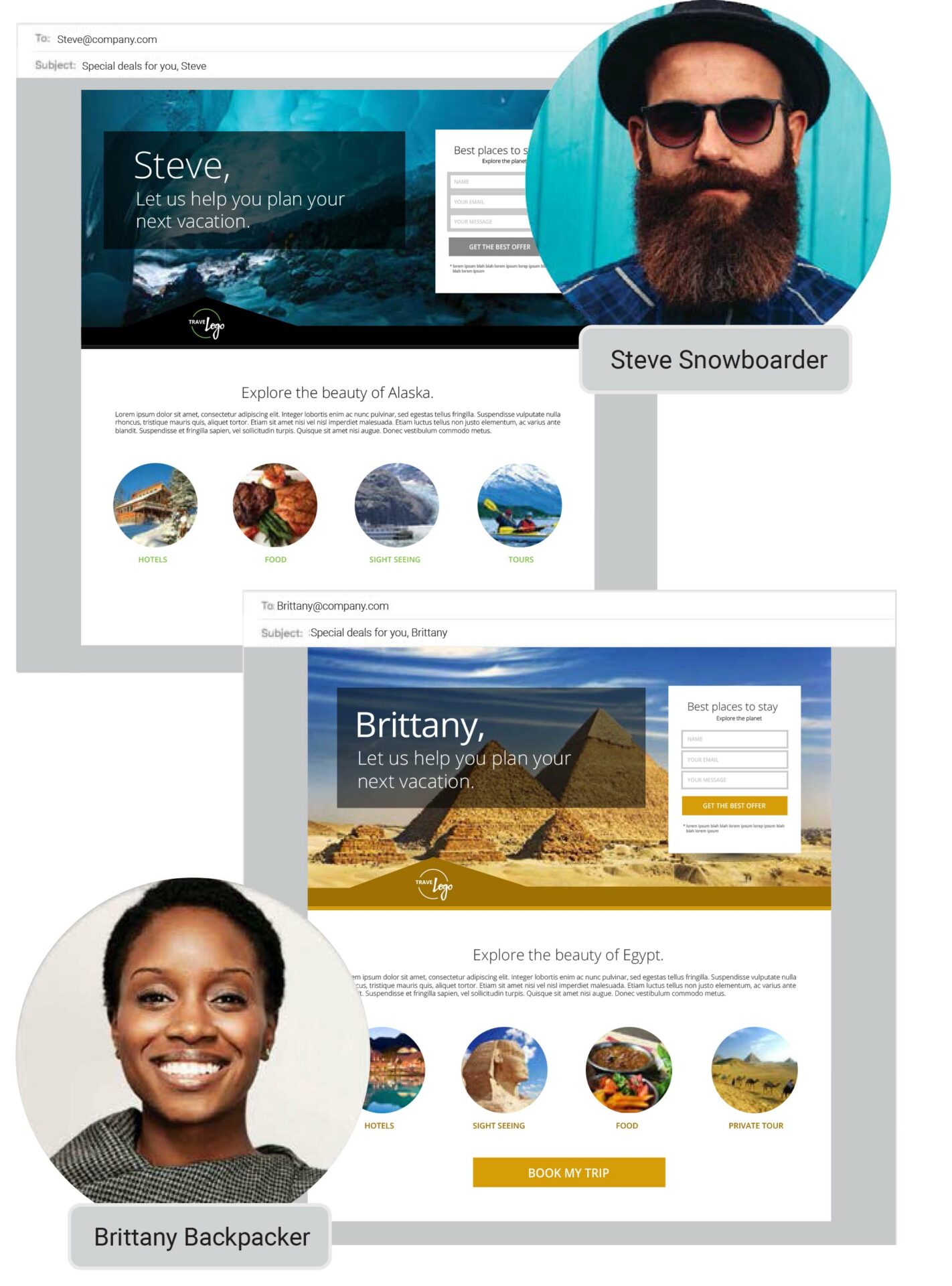Dynamic Content
Personalise Your Marketing With Dynamic Content
A Changing Digital Landscape
Ask marketers what their goals are, and one of the first things they will say is to deliver a more personalised experience to their customers. This isn’t a goal aimed solely at increasing conversions; it’s also about meeting customers’ growing expectations.
To put this into context, five years ago people were awed when Amazon could recommend a product they’d love. Today, users expect that Netflix will recommend them a library of films based on their tastes. In fact, nearly 74% of users get frustrated with websites that don’t deliver personalised content.
So how does a marketer meet this high demand for personalised communications? The answer is in understanding the power of dynamic content and how it makes static content marketing obsolete.
Leveraging Dynamic Content
The art of leveraging dynamic content is all in making your communications read as though they are organic and personalised (i.e., not auto-generated). It may sound expensive, but resources and tools exist to make dynamic content affordable even for small businesses. Now is the perfect time to learn about integrating dynamic content into your overall marketing strategy.
Of course, as with any unfamiliar technology, learning about methods, application and implementation can be a stumbling block, but that doesn’t have to be the case. This guide will show you the ins and outs of dynamic content and give you seven ways to start integrating it into your marketing today.
of online consumers get frustrated with websites when content (e.g., offers, ads, promotions, etc.) appears that has nothing to do with their interests.
Online Personal Experience Study, Janrain
What Is Dynamic Content?
Simply put, dynamic content refers to elements of a website or email that change depending on a user’s information or past behaviour.
For instance, the hero image of a marketing email could change to display an image of a beautiful travel destination for a user who’s looking to book a vacation. An offer on a web page might change for a first-time visitor versus a visitor with a high lead score who is likely ready to buy. Another example would be a clothing retailer showing a banner ad for the pair of shoes you browsed but did not buy last week.
Ultimately, dynamic content creates a personalised experience for every individual user. So instead of everyone who lands on your site or receives your email seeing the same thing, leads may see something different depending on how they have interacted with your company before.
"Marketing’s future lies in database marketing where we know enough about each customer to make relevant and customized offers to each."
Philip Kotler
Dynamic Content Examples
Now, let’s make everything a little clearer with some real-world examples of dynamic content. Thankfully, it’s fairly easy because virtually every major organisation in the world uses dynamic content to some degree.
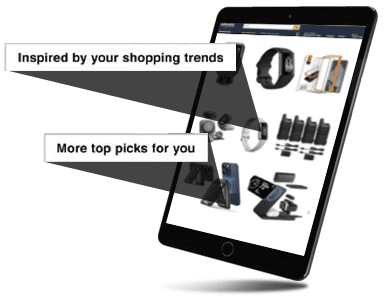
Amazon
Love it or hate it, this retail giant pioneered the use of dynamic content in the retail space. You know those ads for suggested products that you see when you first go on the website or when you click on a product that you’re interested in? No, that’s not Amazon hiring an army of private detectives to watch the interests of the site’s hundreds of millions of worldwide users. That’s dynamic content in action.
Netflix
It’s not just retail websites that utilise dynamic content. Netflix also tracks what you’ve watched and for how long to provide personalised recommendations of programs you might like. Their entire homepage is one huge piece of dynamic content. When you log into your Netflix profile, you’ll see something completely different compared to when others in your household log into theirs.
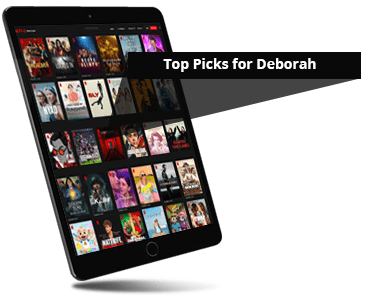
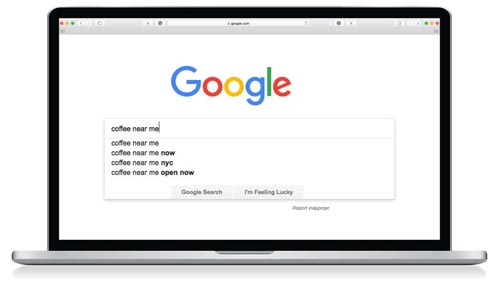
It would be surprising if the most-visited website in the world didn’t use dynamic content, wouldn’t it? Google actually uses dynamic content in a number of ways. One way that most people have probably experienced is searching for a “service or shop near me”. In this case, Google will deliver personalised content based on your location. So if a person in Glasgow and a person in London both search for “coffee near me,” they’ll see completely different results.
Other Prime Examples
Just about every industry leader makes good use of dynamic web content to personalise the buyer journey and create a better user experience.
Using dynamic geo-location, Domino’s Pizza will give a user the closest store based on their location. Hilton Hotels will serve up different offers based on a user’s indicated travel plans.
Past use or purchase history is another way dynamic content can be leveraged. Udemy, an online learning platform, will offer course recommendations based on a user’s purchase history, and YouTube has a constantly updated list of recommendations based on previous viewing history.
FitBit tracks metrics like food, exercise, and sleep based on your goals upon signup. It then sends regular emails about your goals throughout the day.
of in-house marketers agree that website personalization is critical to current and future success.
The Realities of Online Personalization, consultancy
How Does Dynamic Content Work?
Understanding how dynamic content works is actually relatively straightforward. Implementing it, on the other hand, can be much trickier – if you don’t have the right tools. Luckily, marketing automation platforms make providing personalised content for your users a lot easier. It can be as simple as an interface that lets you point and click to swap out options – all without having to touch any code.
How does dynamic content work? Once you’ve collected relevant data from your users (things like name, location, which web pages they visit, what they purchase, etc.), you can then use that data to swap out content on your landing pages or emails to target users on an individual basis.
For example, a customer visits an online retailer, looks at several products, decides to make a purchase, enters his details (name, address, etc.) into the order form and buys the product. His contact details, the purchase made and the other products he looked at are all data that is relevant to him and is stored in his lead record.
The next time this same customer visits the retailer, the website will recognise him, access his stored data and serve up products similar to previous purchases.

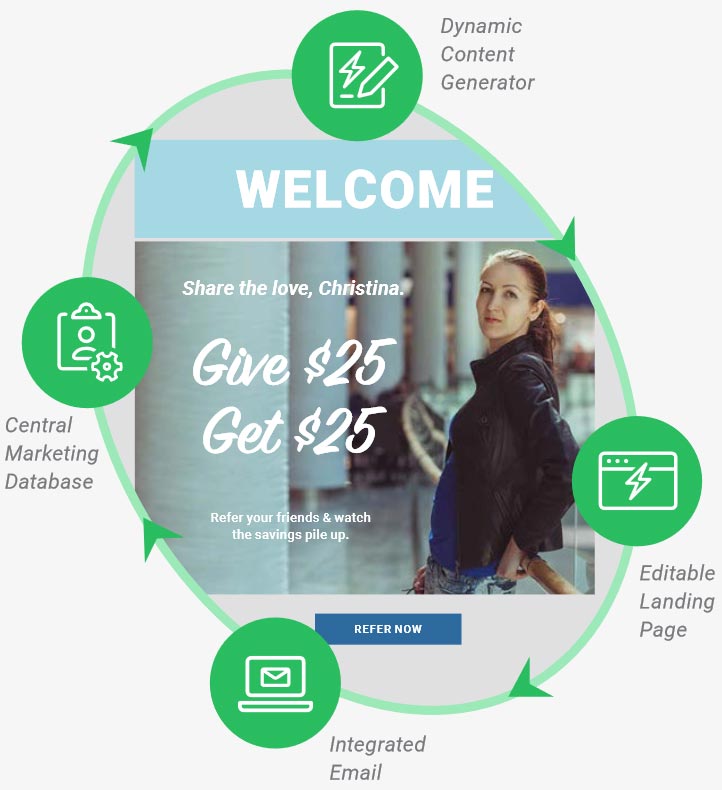
In order to deliver dynamic content to a user, several elements are required:
A Central Marketing Database
There must be a way for the data to be taken from the database and displayed on the page or in the email. A dynamic content generator will be able to display information in a number of different elements and automatically show or hide elements depending on the data available.
An Editable Landing Page
For the dynamic content generator to work, the web page must be built in a malleable way. Not only does this allow dynamic content code to be placed throughout the site as necessary, but it also allows for greater personalisation to be implemented in the future based on the data collected on users.
Integrated Email
Your email marketing system must be integrated with your database to allow for personalised campaigns.
“The aim of marketing is to know and understand the customer so well the product or service fits him and sells itself.”
– Peter Drucker
7 Ways You Can Use Dynamic Content
From the examples at the start of this guide, you can see that there are many ways you can integrate dynamic content into your marketing strategy. Below you will find seven examples of existing places in your marketing where dynamic content can fit right in. However, there’s no need to limit yourself to these! Test and experiment with different options yourself. The important thing to remember, however, is to always make sure that the content you are serving is relevant to the user.
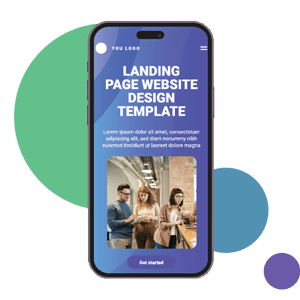
1. Landing Pages
Landing pages are a great way to convert users into customers. Consider the impact of delivering a personalised message to every user. The details will, of course, depend on the product. Start by integrating the lead’s name into the page design, and then reference products the lead has already used. Go one step further by personalising the call to action. If a lead has already downloaded one of the opt-in rewards, for example, display another to ensure that they remain in the funnel.
2. Email
Delivering dynamic content to users in email campaigns is a great way to increase open rates and conversions. Again, there’s much more to personalising an email than including the user’s name. Content can be changed depending on the user’s location or browsing history in the same way it works on your landing pages.

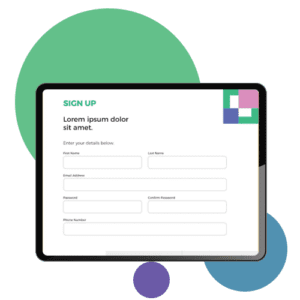
3. Forms
With dynamic content, a site can offer a better user experience by delivering personalised forms. When a visitor is identified as “known” versus “unknown,” the site can present variations on forms displayed or hide them altogether. For example, an unknown visitor might receive a form with a special offer whereas a known visitor might simply need to confirm his email address. Other website personalisation can happen once someone is a known visitor. A known visitor might see a login page instead of a registration page.
4. Redirects
Another way to convert users into customers is by using redirects. If a user has been seeking more information about Hawaii, for example, he could be redirected to a page about Maui. Redirects can happen almost instantaneously, and the visitor may not even realise that they’ve been redirected.

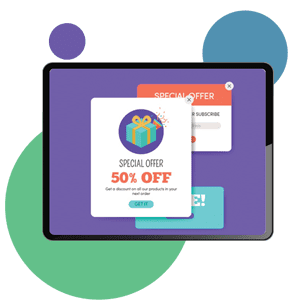
5. Pop-Ups
You don’t have to rely on past behaviour to deliver dynamic content to users. By using real-time signals, such as the time spent on a page, length of inactivity, scroll activity or user clicks, you can deliver intelligent pop-ups to achieve a specific action. Usually, this will be to prevent a visitor from leaving the website without first entering into your sales funnel. Use this type of dynamic content to direct him to the best content based on his location.
6. Personalized Recommendations
We’ve already talked about how major online companies use personalised recommendations. Both Amazon and Netflix use data-driven recommendations to encourage users to purchase more items (in the case of Amazon) or continue their subscriptions (in the case of Netflix). But recommendations don’t just have to be product-related. You could also recommend content from your blog based on the articles a user has previously read. In essence, this helps to “free” content from the “confines” of repeat purchases and to ensure users see as many of your products as possible.
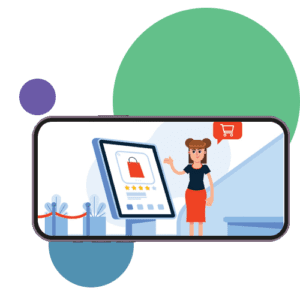

7. Dynamic Searches
On large websites with hundreds or thousands of pages, search bars can become unfriendly for users very quickly. Here, use individual user data as well as site-wide data to deliver a personalised, user-friendly experience. One method would be to suggest the most frequent search queries. Alternatively (or in addition), the site can deliver results based on a user’s previous preferences. For instance, a user might prefer a particular brand of clothing or might want to only buy items in a particular pricing bracket.
Across the board, organizations’ investments revolve around implementing personalization initiatives, solving people challenges, and assembling digital experience platforms.
Digital Experience Technology & Delivery Priorities, Forrester
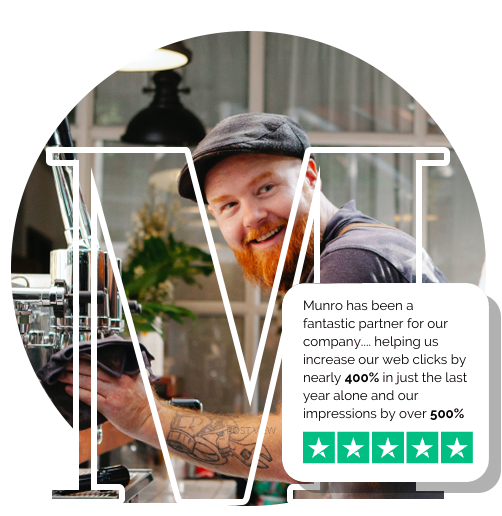
Ready to start with Thought Leadership Content?
Get a friendly chat with our Content Experts.
T: +44 141 212 6354 | E: [email protected]

